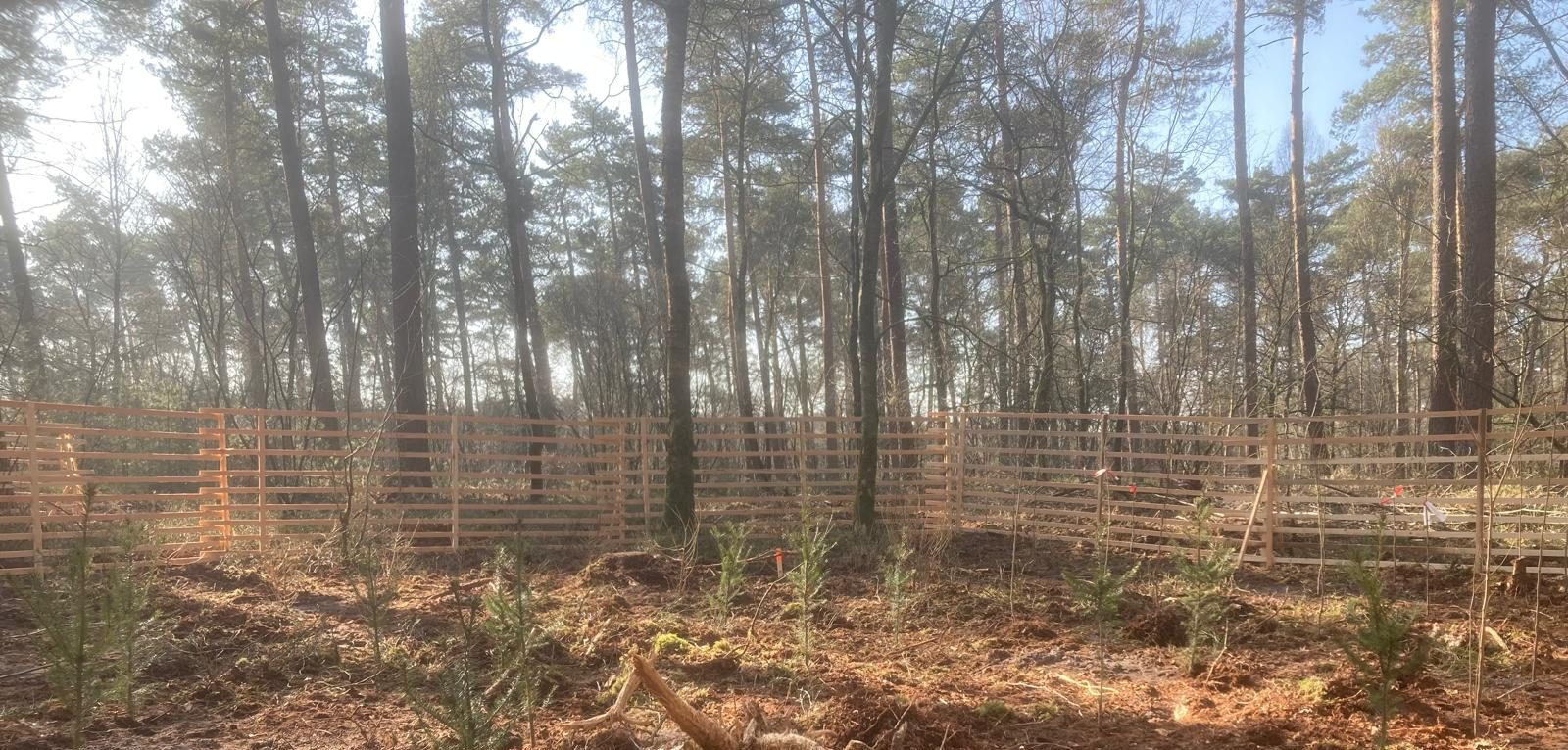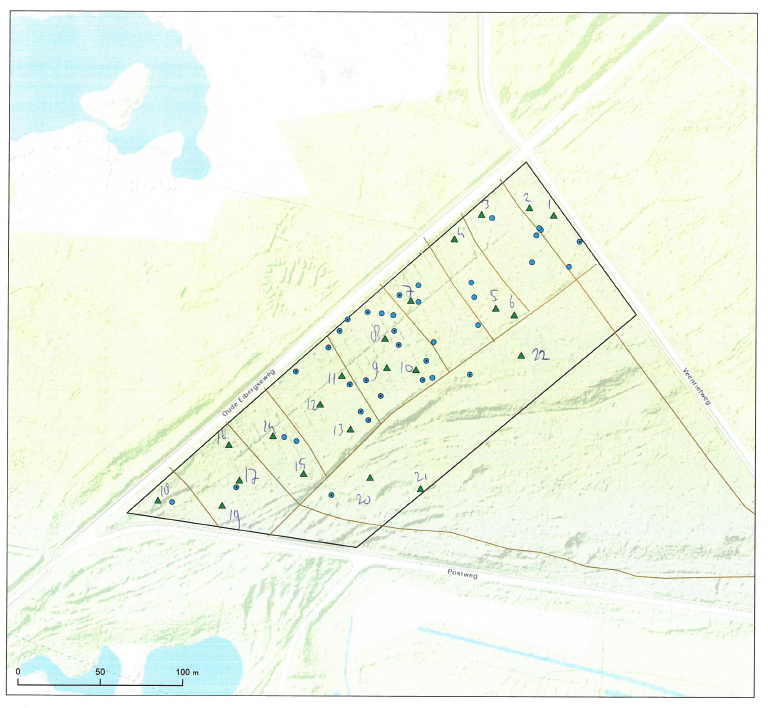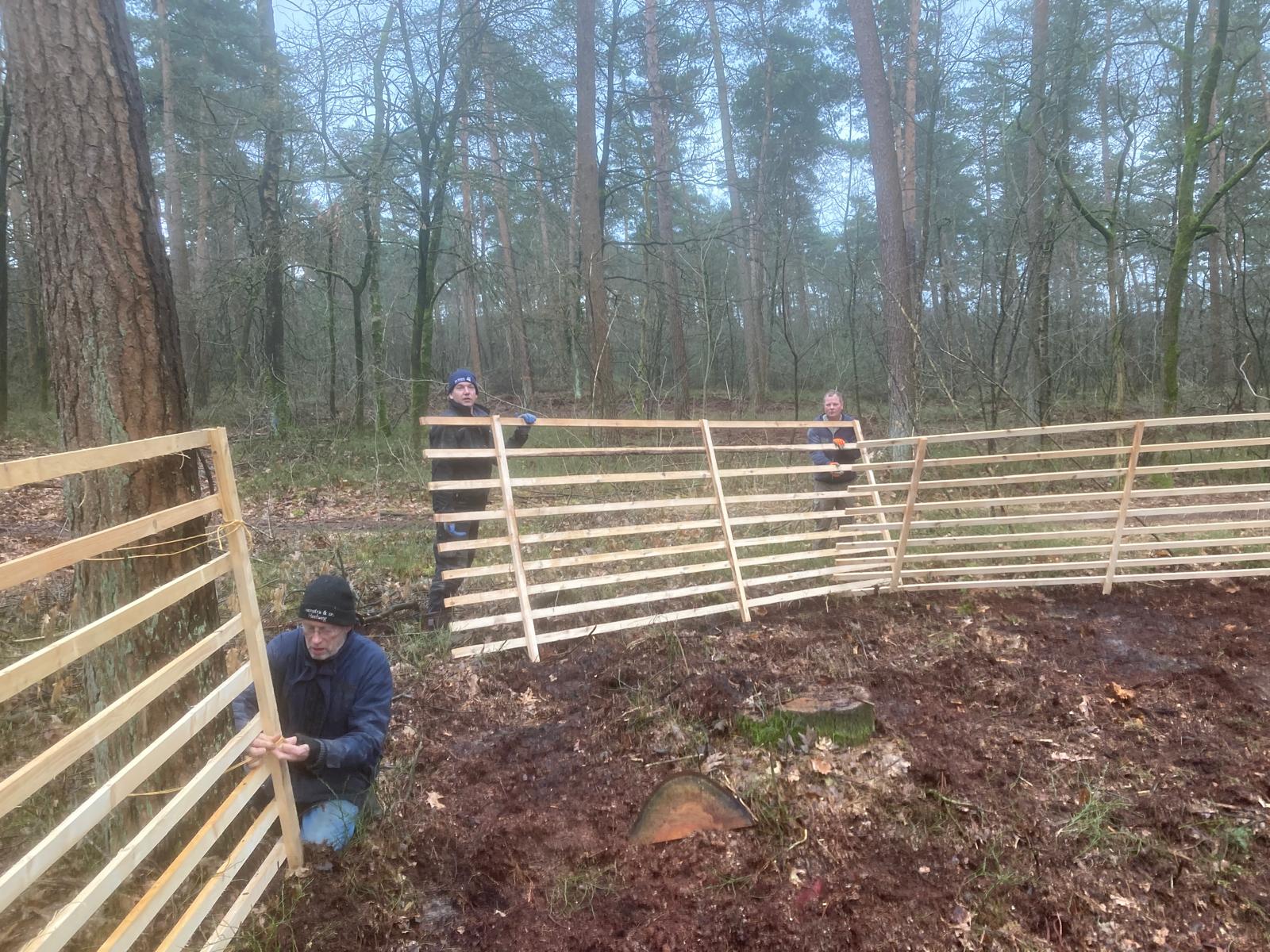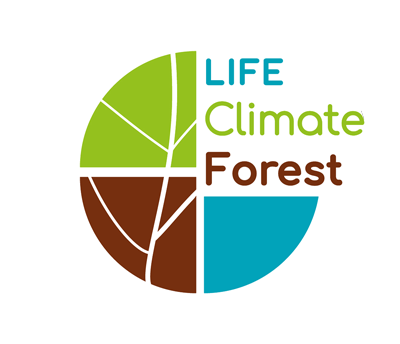
'Learning on the Job' at Landgoed Het Lankheet
Besides the sample LIFE Climate Forest forests, there are also places where we are working on climate-smart forest management on a slightly smaller scale. These LOTJs are ideal for researching, trying out and learning on the job. LOTJ therefore comes from 'learning on the job'. A good example of this is LOTJ Het Lankheet.
Lankheet is a medieval estate with forests, streams, moors, moors, fens and old farmsteads surrounded by hay meadows and higher ground. The area is about 600 hectares and it is located on the border of Overijssel and Gelderland in the municipalities of Haaksbergen and Berkelland.

Planting new tree species
New tree species have recently been planted on Landgoed Het Lankheet in Overijssel as part of climate-smart forest management. In total, this LOTJ involves 12 plots of 15×15 metres each. In the process, employees and volunteers of the estate themselves designed and made wooden grids to protect the young plantings from predation.

Protection against wildfowl
Different types of wood were used for the grids: wood that was left over, pine, Norway spruce, larch and Scots pine. Initially the leftover pieces from the mobile saw, which they have at Het Lankheet. And additionally from the thinning that de Bosgroepen - also as part of LIFE Climate Forest - carried out this winter.
The wooden slats are fastened together with a shotgun and nails that rust, so that they eventually blend in completely with nature. Hemp rope was used for the fences themselves, from a nearby organic farm.
Fences digest on their own after use
Luc Jehee, management committee of Het Lankheet estate: "Nice for Het Lankheet estate to be able to contribute to knowledge about forests in a warmer climate with increasing weather extremes. Indeed, we made the fences from residual wood, Scots pine, in our own sawmill. To assemble them, we use biodegradable staples. When installed, the light fences are still noticeable, but within a few weeks they are so discoloured that they disappear into the forest."
"We are now going to see how these deer-proof fences hold up... although after a few years, the very idea is that the fences will fall apart and decompose. This way, we contribute to less plastic waste from tree guards and netting in nature. The remains of our fences will soon be incorporated back into the forest cycle."
Curious about other locations and the measures taken there as part of LIFE Climate Forest?


